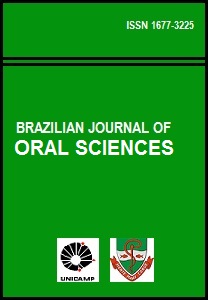Abstract
Conscious sedation has become established as an important alternative to general anesthesia (GA) in dental treatment of patients with intellectual disability (ID). Aim: to investigate dental patients undergoing sedation using a mean dose of 0.6 mg/kg intravenous midazolam and the adverse events of sedation in patients with ID. Methods: This study analyzed the records of 163 dental patients with ID aged between 2 and 76 years who had undergone conscious intravenous sedation (CIV) using a mean dose of 0.61 mg/kg of midazolam at Araçatuba Dental School, São Paulo State University, Brazil. The efficacy and complications induced by CIV were evaluated in each subject. Results: CIV was effective for dental treatment in 80% of the cases. A total of 626 dental procedures were performed. The mean treatment time was 33.9 minutes. There was statistically significant difference (p<0.05) between absence and presence of adverse reactions. Adverse reactions were observed in 21.47% of the cases. Conclusions: The results of this study showed that CIV is a useful method for dental treatment of patients with ID and these patients can need higher doses of sedative to reach an adequate level of sedation.The Brazilian Journal of Oral Sciences uses the Creative Commons license (CC), thus preserving the integrity of the articles in an open access environment.
Downloads
Download data is not yet available.

